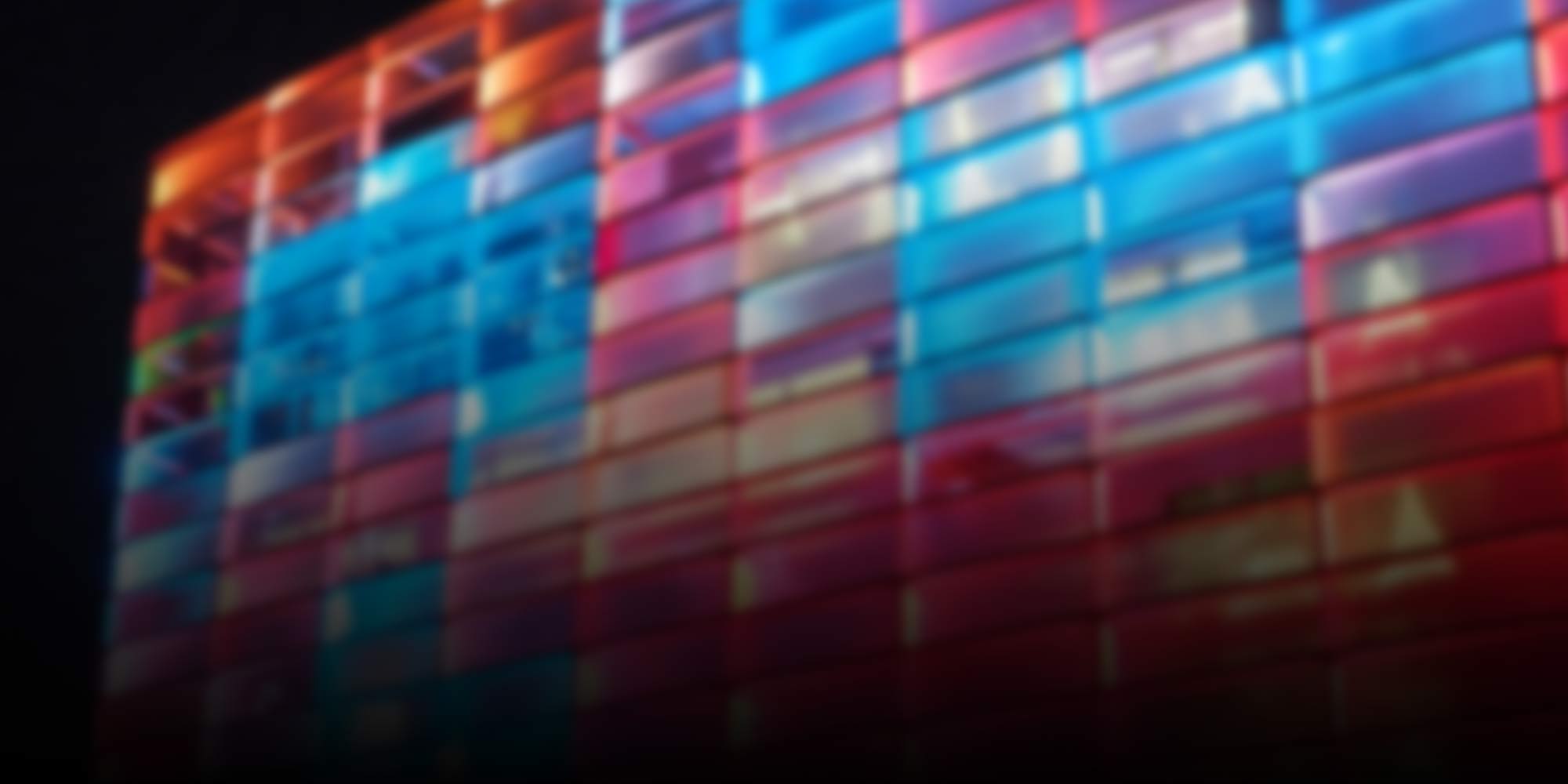
Deep Space 8K
-
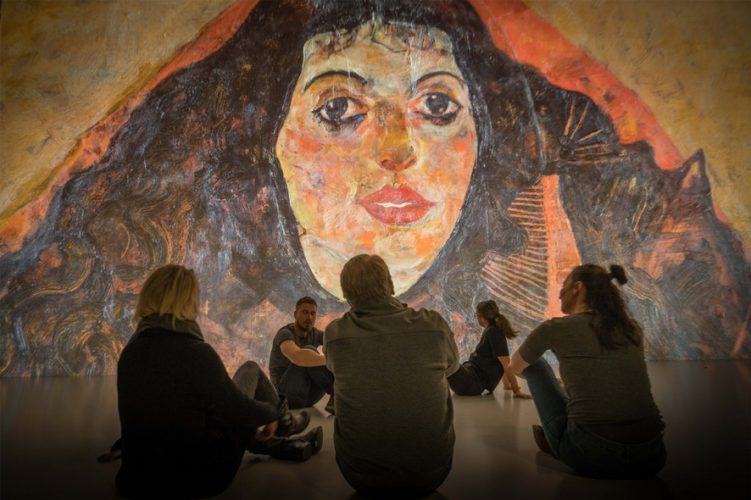
Deep Space LIVE: Egon Schiele’s “Portrait of Trude Engel”
100 years ago, artist Egon Schiele died in Vienna. He left behind a remarkable oeuvre of expressionist works, one of them a portrait of a young woman named Trude Engel. Who was she? And why was the image stabbed with a knife? At the next Deep Space LIVE, “Egon Schiele – A Closer Look at…
-
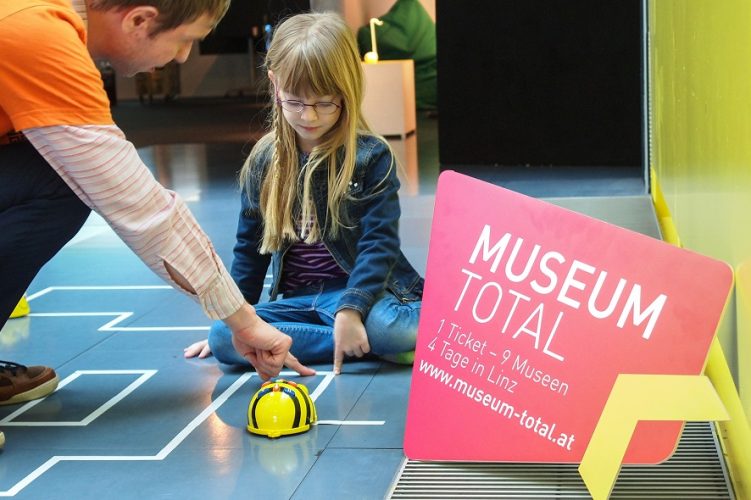
Museum Total: Four Days, Nine Museums
Museum Total is back by popular demand! This event, which is being held for the fifth time this year, is set for February 22-25, 2018. One ticket admits the holder to nine Linz museums—the AEC among them—over the course of four days. What’s lined up? Nicole Grüneis, director of Ars Electronica’s Education and Cultural Outreach…
-
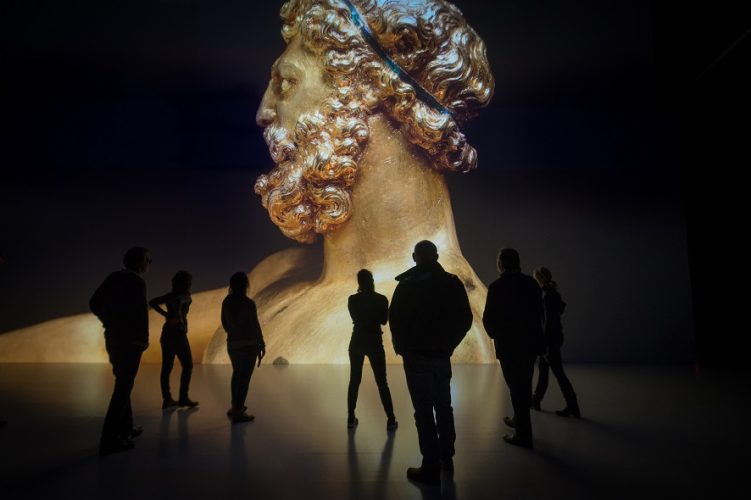
Cultural Heritage in 3D
2018 is European Year of Cultural Heritage, and the Ars Electronica Center is taking part by hosting several events devoted to our cultural heritage throughout the year. Kicking things off will be a themed weekend on January 27-28, 2018 in Deep Space, where one of the featured speakers will be Stefan Traxler, archeologist at Upper…
-
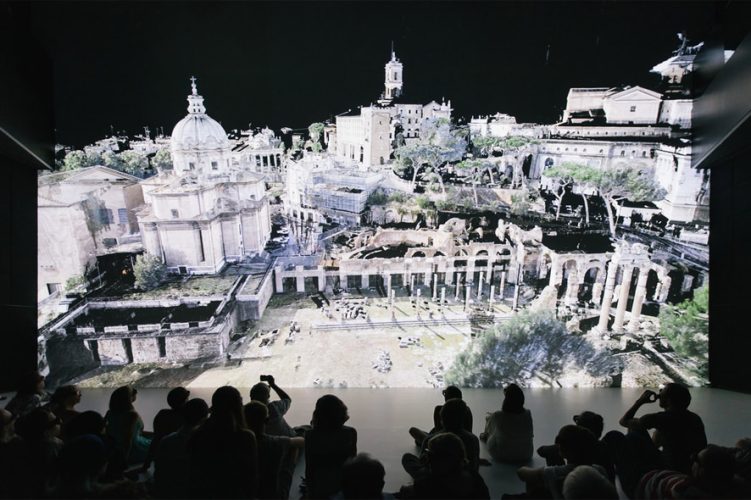
Cultural Heritage: The Past Has a Bright Future
2018 is European Year of Cultural Heritage. To mark the occasion, the Ars Electronica Center is making cultural heritage a highlight of this year’s program of events. But you might ask why the Museum of the Future of all places is focusing on the artistic and cultural treasures of past epochs? Indeed, because the research…
-
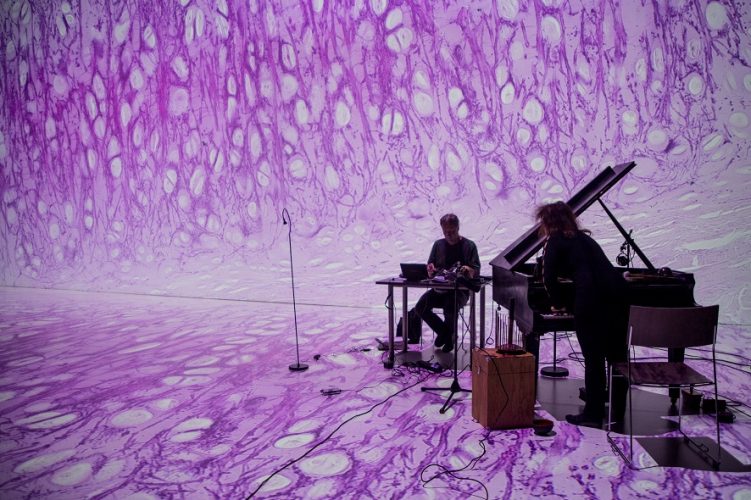
Music That Gets UNDER YOUR SKIN
Experimental musicians Karen Schlimp, Jaap Blonk and Klaus Hollinetz take us along on a sonorous journey through the human skin this Friday, December 1, 2017. In a concert entitled “UNDER YOUR SKIN/Bodyterms” in Deep Space 8K, they’ll play on medical terminology, through scores made of microscope images, and with the full range of their instruments’…
-
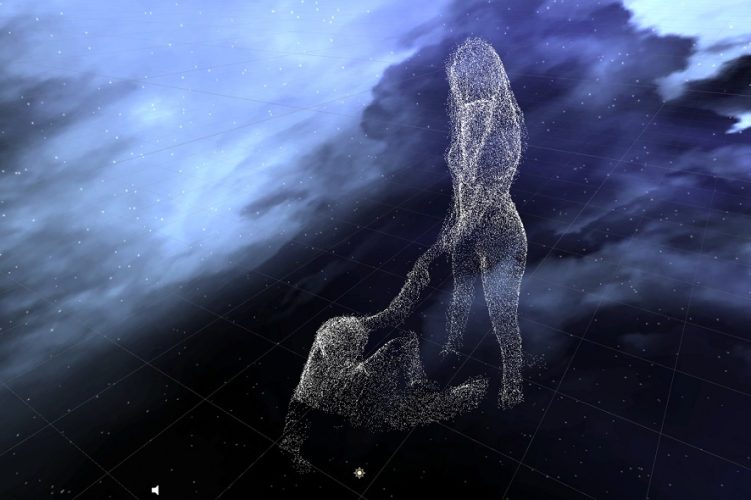
VR and Theater: The Cyberräuber at the 2017 Long Night of the Stages
The next Long Night of the Stages is set for November 11, 2017 when, in addition to theaters and other stage-based performance venues, the Ars Electronica Center will host a diverse lineup of productions. The dramatis personae include Björn Lengers and Marcel Karnapke, who’ll be contributing two projects at the interface of performance and virtual…
-
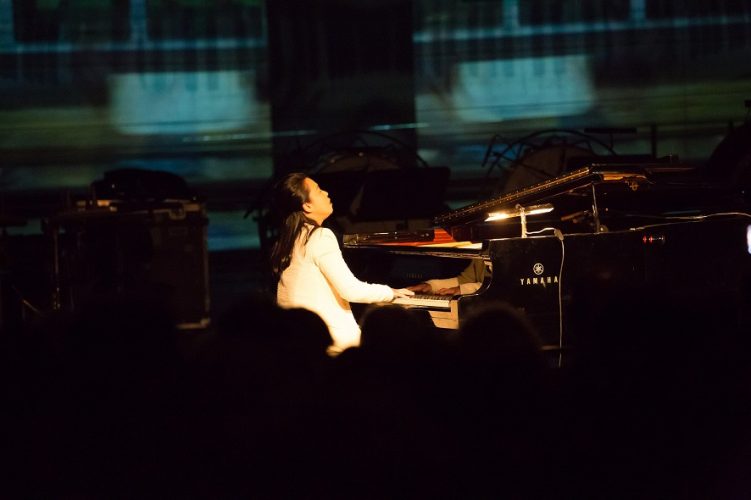
As if in a Trance: Maki Namekawa and “20 Etudes for 20 Etudes”
An Austrian premiere concludes the Festival on Monday, September 11, 2017. Maki Namekawa will perform all 20 of Philip Glass’ piano etudes accompanied by artist Cori Olan’s real-time visualizations. The duo will also present a daily demonstration of their virtuosity in Deep Space 8K. Maki Namekawa tells us more in this interview.
-
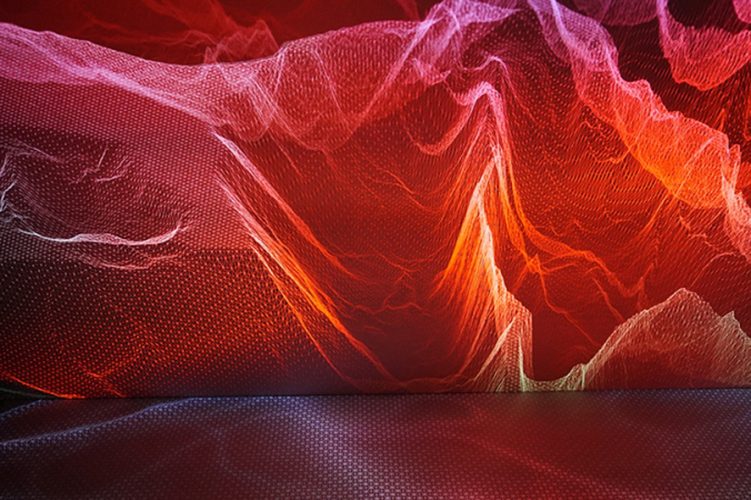
Flow: A Sea of Real-time Data
The water comes in; the water goes out. Since time immemorial, human beings have been fascinated by the sea. Artist Mathieu Le Sourd alias maotik has captured its motions and translated them into a walk-through interactive visualization in Deep Space.
-
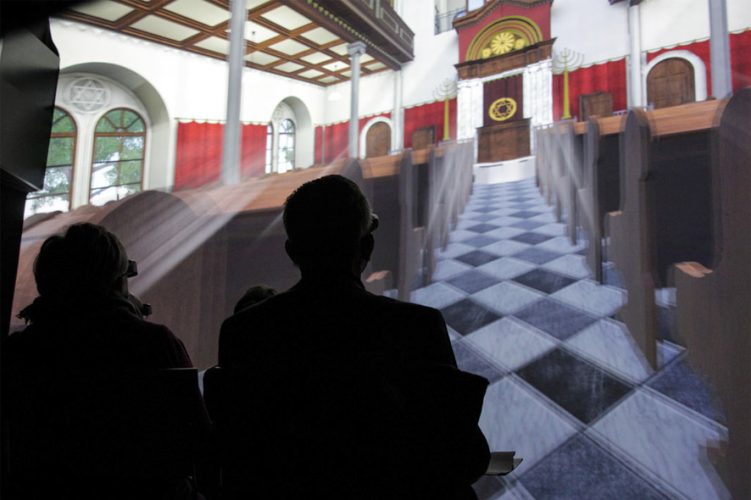
The Linz Synagogue in 3-D
The Linz Synagogue that was destroyed in 1938 has been reconstructed—at least, virtually—and it’s now possible to tour it in Deep Space 8K at the Ars Electronica Center. In this interview, Danielle Spera, director of the Jewish Museum of Vienna, talked to us about the general significance of a synagogue as well as her personal…
-
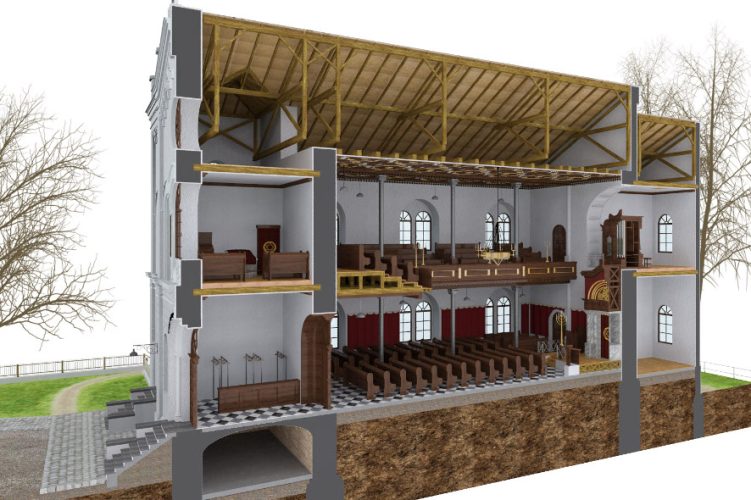
The Virtual Reconstruction of the Linz Synagogue
On Kristallnacht in November 1938, a mob acting on orders of the Nazi regime broke into the Linz Synagogue—like so many other Jewish houses of worship that night—ransacked it and set it ablaze. All that remained of the synagogue was a burnt-out ruin.
-
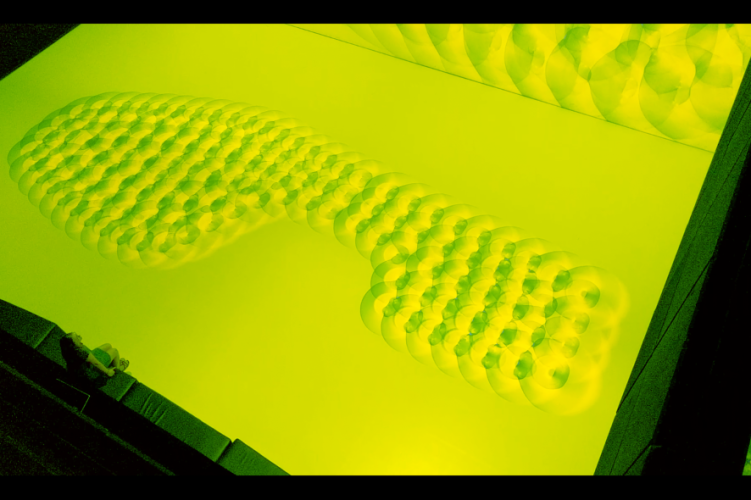
Scalar Fields – Each step has an Importance
“Scalar Fields” visualizes the pressure field around the soles of shoes. By using the fluid simulation software developed by the artist, the propagation of pressure in air is visualized in 8K video. During the Ars Electronica Festival 2016, the visualization can be seen as floor and wall projection at Deep Space 8K with a marvelous…
-
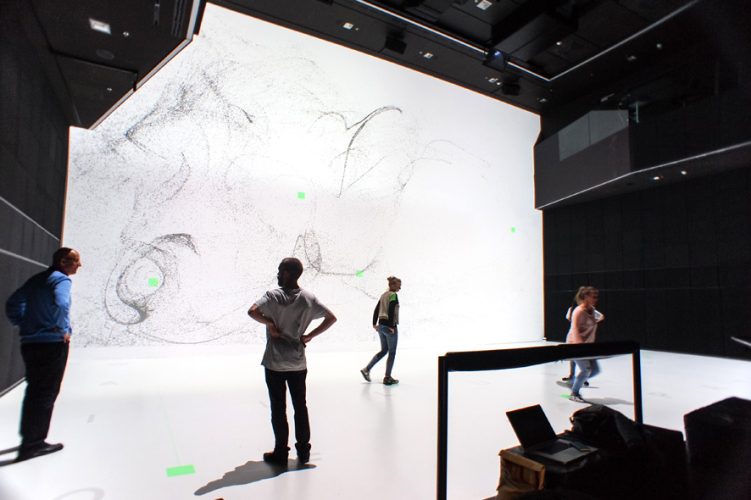
Intro to Deep Space: The Course
Linz Art University’s Time-based and Interactive Media bachelor’s program offers students the opportunity to create interactive works especially for Deep Space 8K at the Ars Electronica Center. Read more about it in this interview with the program director, Prof. Gerhard Funk.
-
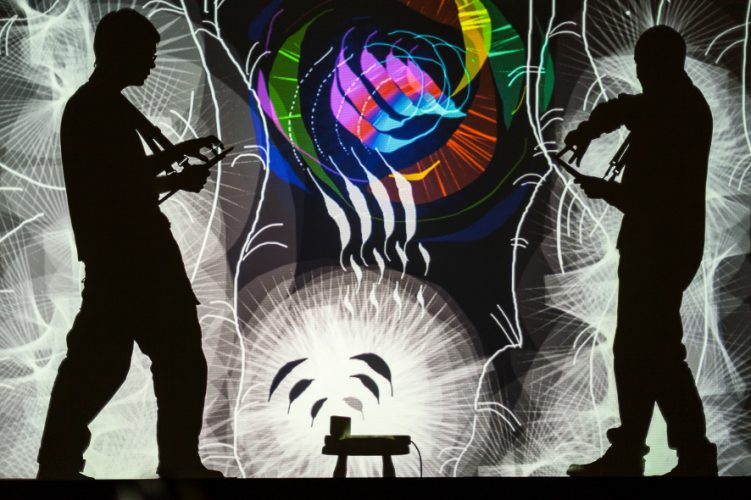
Space Painting in Deep Space 8K
On Saturday the workshop “Tagtool” took place in the Ars Electronica Center as part of the Deep-Space-Weekend: UNESCO City of Media Arts. With a beamer, imagination and the app “Tagtool” participants transformed animations into projections and awakened digital paintings to life. In Deep Space 8K as workshop space this application takes on a whole new…
-
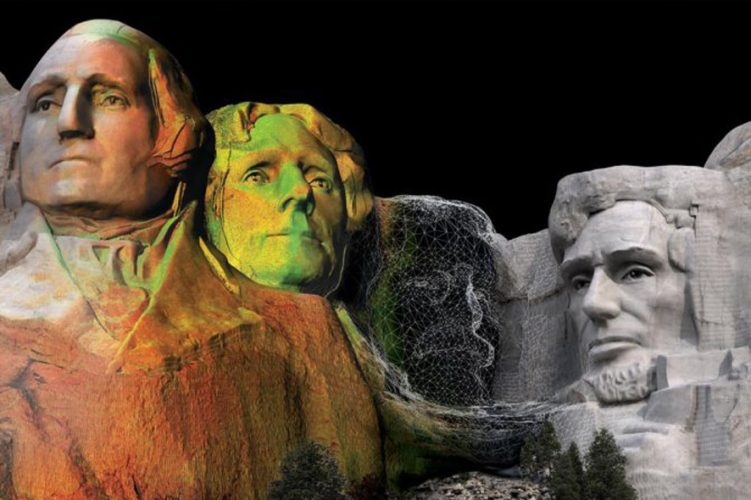
CyArk: Cultural Heritage as Virtual Experience
Groups of visitors to the Ars Electronica Center can take a joint virtual tour of some of the world’s most important cultural heritage sites courtesy of the 3-D content provided by CyArk now being screened in Deep Space 8K. Elizabeth Lee, vice-president of the international non-profit organization, talked to us about the possibilities that this…
-
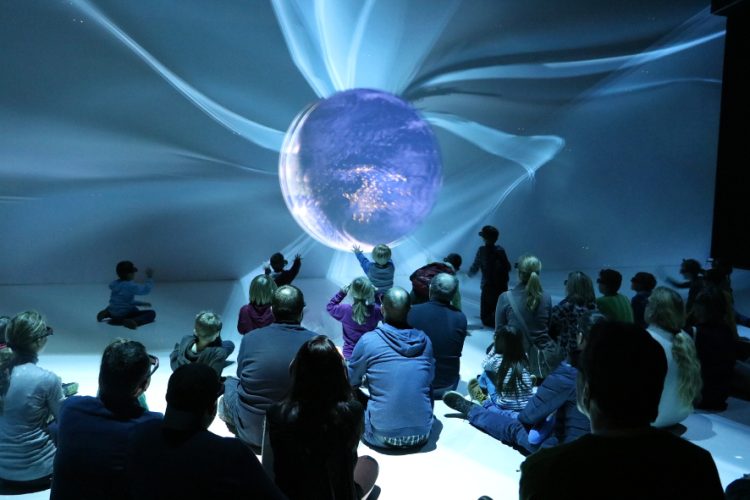
A Weekend Outing in Outer Space
The Uniview visualization software used in Deep Space at the Ars Electronica Center takes visitors on interactive 3-D flights through the entire known universe in breathtaking images. Never-before-seen dimensions of outer space make up the itinerary of this mind-blowing trip.
-
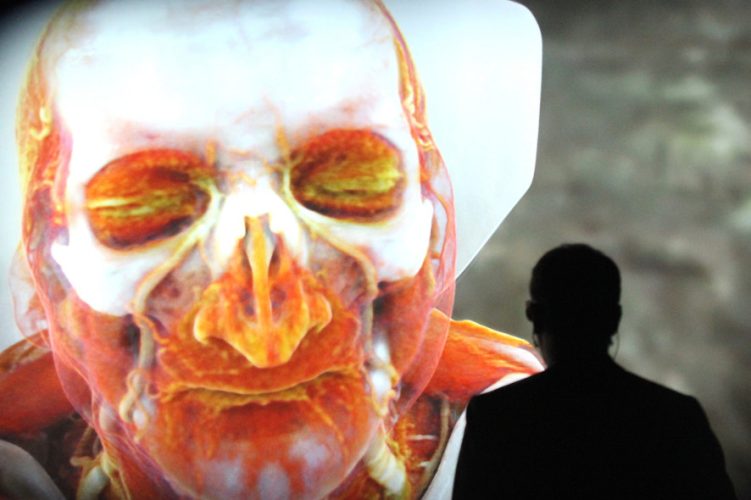
The Universe Within – Cinematic Rendering
Because of the technical innovations in the Deep Space 8K, it is now possible to use highly complex programs. One is the Cinematic Rendering app for the presentation of photorealistic images of the human body in 3-D and jumbo-format dimensions.
-
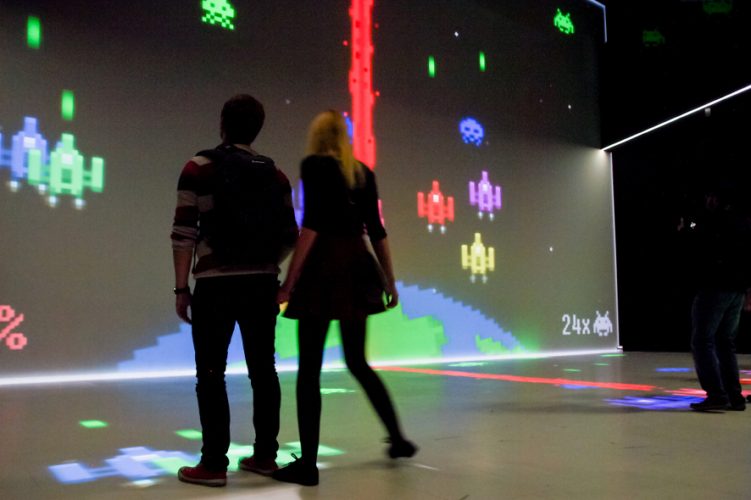
Get Moving! Game Changer Suite in Deep Space 8K
Jeremiah Diephuis and his students in the Interactive Media program at the Upper Austria University of Applied Sciences’ Hagenberg Campus are reliable providers of content for Deep Space—in 8K too. The Game Changer Suite game collection has already mobilized lots of visitors to the Ars Electronica Center.
-

ŠKODA Rallye 3-D: Motorsport Right Up Close
What does it really feel like to race down a narrow gravel road at speeds of up to 150 km/h? For a dealer conference held by carmaker ŠKODA, the Ars Electronica Futurelab produced an action-packed 3-D video that’s now being screened for Ars Electronica Center visitors in Deep Space 8K.
-
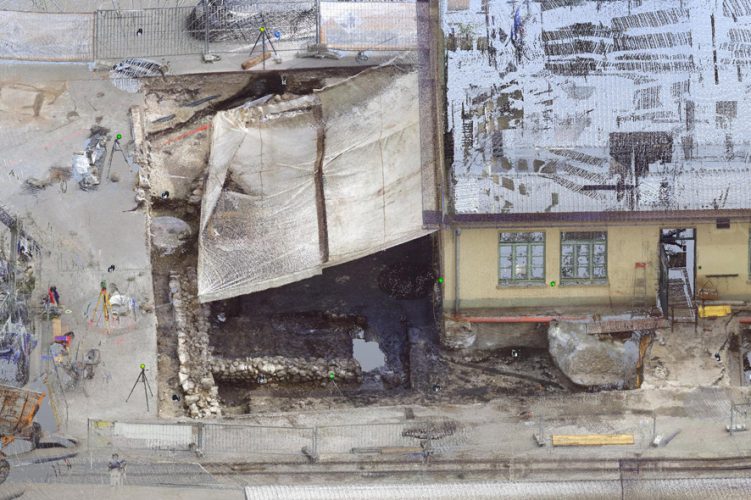
Point clouds of the past
Archaeologists are increasingly using laser scanning technology, as shown in the example of the Upper Austrian Provincial Museum in collaboration with EF Tech. It allows to capture historical places and buildings as three-dimensional objects and thus to preserve them for posterity.
-
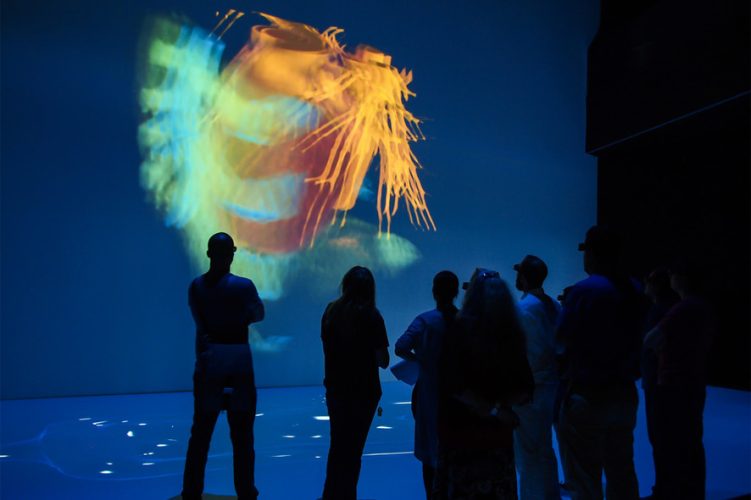
The Heart Beating in 3-D
It turns out that you can peer into a person’s heart after all! The latest visualizations by the Fraunhofer Institute for Medical Image Computing (MEVIS) make it possible to see what goes on in our blood vessels and understand what’s happening.
-
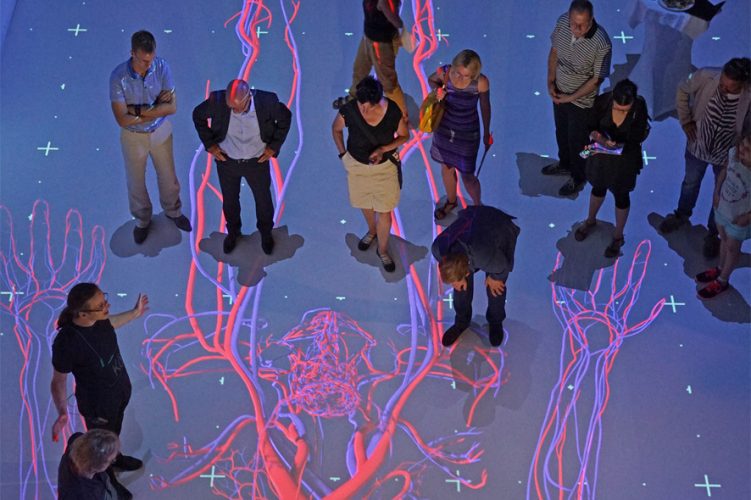
“Unity” in Deep Space 8K
At the conference “Unite 2015” in Boston, the team of the Ars Electronica Futurelab presented the “Human Bodies: The Universe Within” project, which was realized with the development environment “Unity”.
-
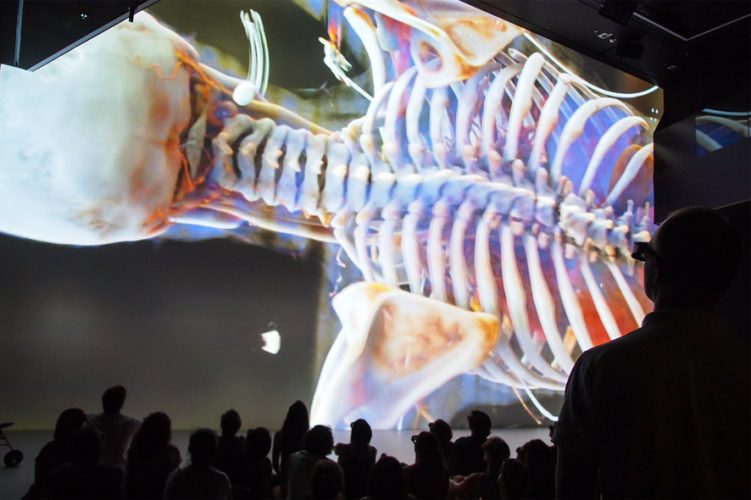
Cinematic Rendering: Big-Screen Anatomy
Cinematic Rendering takes 3-D depictions of the human body to the next level of image quality. This project, which was developed by Siemens Healthcare and is now being shown in Deep Space 8K, is a vivid example of how science too can benefit from artistic impetus.
-
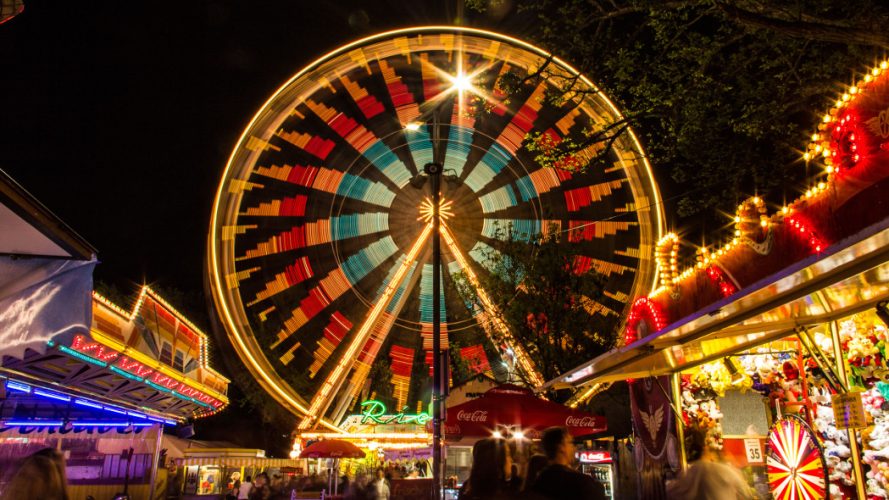
Urfixed Light Animation
“Urfixed Light Animation” is a fascinating stop-motion video featuring hectic light-painting backed by a high-energy soundtrack. It shows Linz’s semiannual Urfahr Fair from a totally new perspective.
-
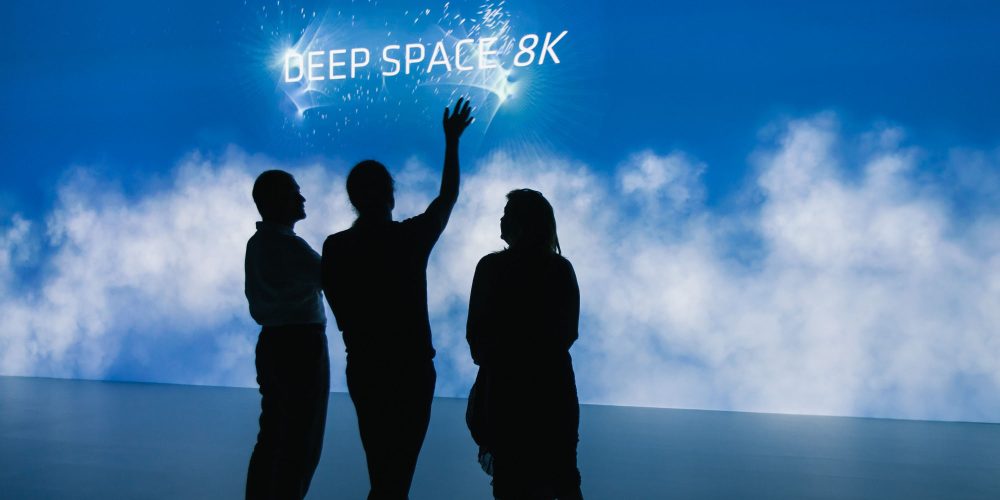
Deep Space 8K – The Next Generation
Sharper pictures, brighter colors and starker contrast are in store for visitors to Deep Space 8K. On August 7th Deep Space 8K premiered and guests immerse themselves in these extraordinary realms of imagery for the first time.
-
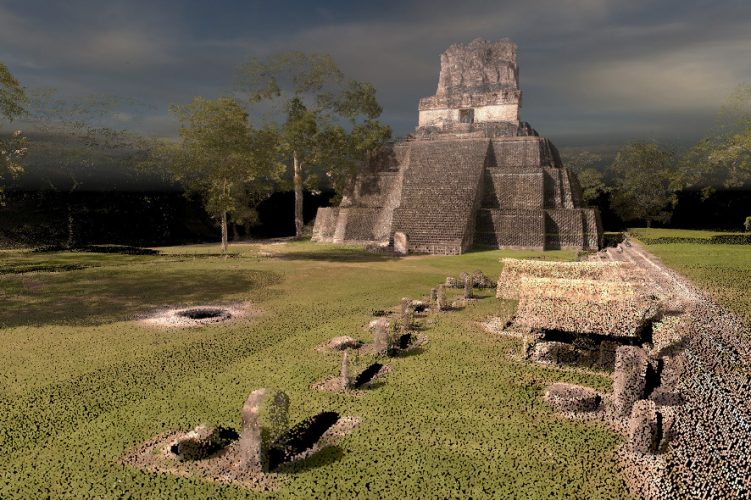
A Close-up Look at Cultural Heritage in Deep Space 8K
To take full advantage of the breathtaking clarity in the new Deep Space 8K, the 8K resolution at 120 Hz and in stereo 3-D, it’s not enough to simply upgrade the hardware. The content to be presented also has to have what it takes to deliver the ultimate visual experience to audience members.
-
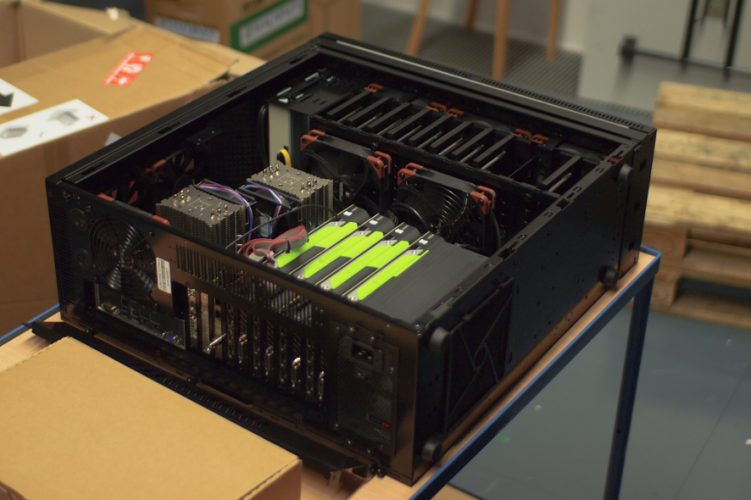
A New Mastermind in Deep Space 8K
In Deep Space 8K, visitors can look forward to breathtaking visuals in 8K resolution on 16×9-meter projection surfaces on the wall and the floor. And processing the resulting flow of data — an awesome 23 gigabytes/second in real time — demands a special high-performance processor.
-
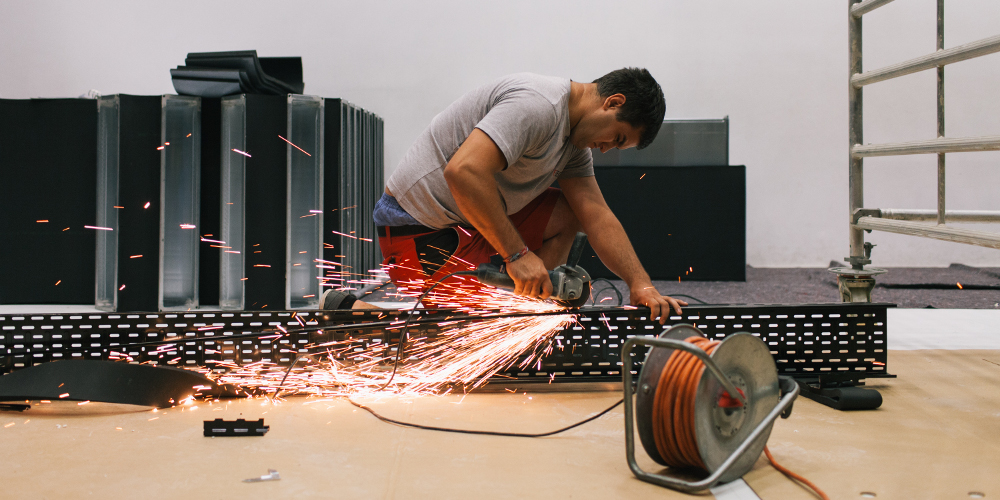
Deep Space 8K: The rebuilding has begun
From August 7, 2015 the images in the Deep Space will be projected in 8K resolution. 8K means pictures in impressive sharpness and color intensity. The renovations to the Deep Space 8K are already in full swing.
-
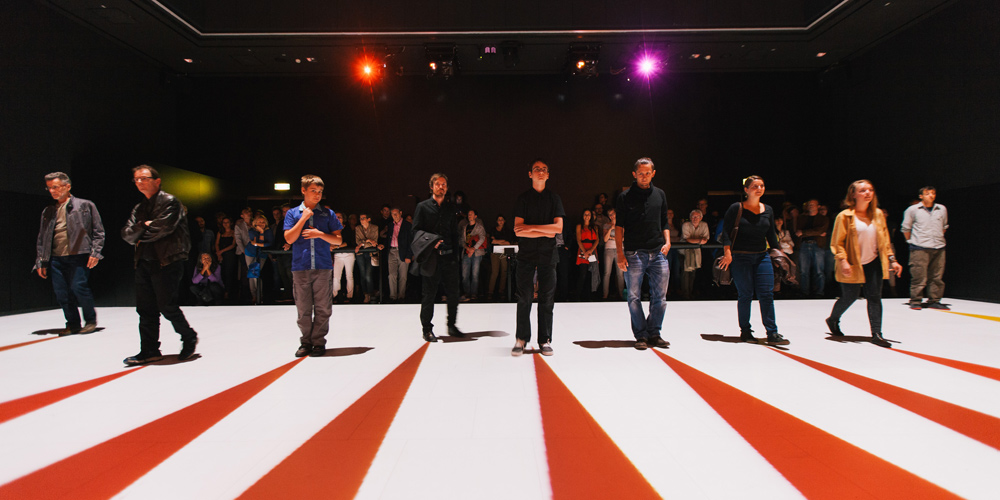
Cooler Visuals, Enhanced Experience: Deep Space 8K
A sensational, internationally unique experience awaits visitors to the Ars Electronica Center beginning August 7, 2015. An all-out upgrade of the venue’s technical infrastructure of the Deep Space will enable audiences to enjoy projections at 8K resolution and thus worlds of imagery at a never-before-achieved level of quality!